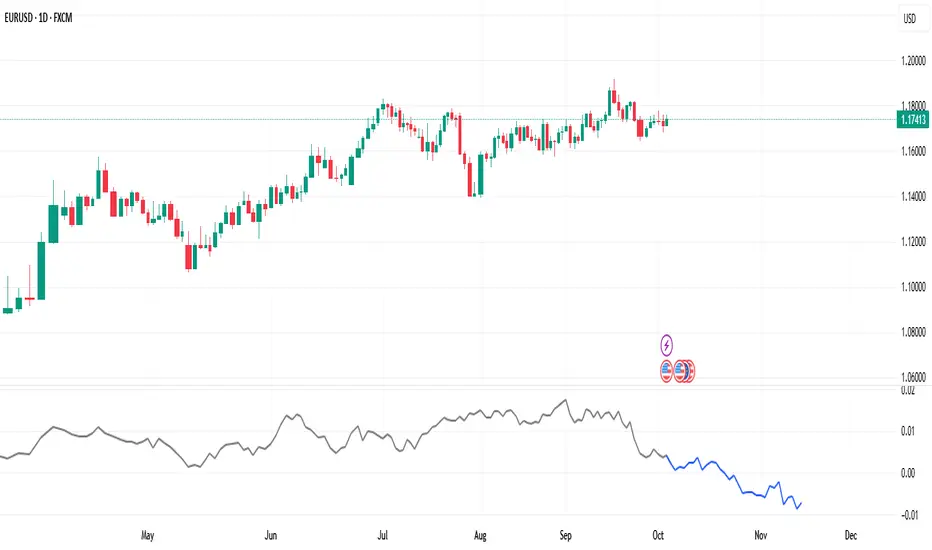INVITE-ONLY SCRIPT
Seasonality

📈 What “Seasonality” Means in Trading
Seasonality in trading refers to recurring market patterns that tend to happen around the same time each year, month, or even week. These patterns are based on historical tendencies, for example, certain stocks or indices often rise or fall during specific periods due to consistent economic, institutional, or behavioral factors.
A simple example:
The S&P 500 often performs stronger in the last quarter of the year (“Santa Rally”).
Crude oil prices tend to rise during summer months when demand for fuel increases.
Agricultural commodities follow planting and harvest cycles.
By analyzing these seasonal trends, traders can gain an additional layer of probability in their decision-making. It doesn’t replace technical or fundamental analysis, but it complements them by showing when a market historically tends to move in a certain direction.
That’s why a seasonality indicator can be extremely useful:
It visualizes past performance patterns directly on your chart.
It helps identify periods of high or low probability for bullish or bearish moves.
It allows traders to align trades with statistical tendencies, not just current price action.
You can also customize the lookback period, for example, view seasonal patterns from the last 5, 10, 15, or 20 years, depending on how much historical data you want to include.
In short, a good seasonality indicator doesn’t predict the future, it highlights what markets tend to do, helping traders act with more context and confidence.
Seasonality in trading refers to recurring market patterns that tend to happen around the same time each year, month, or even week. These patterns are based on historical tendencies, for example, certain stocks or indices often rise or fall during specific periods due to consistent economic, institutional, or behavioral factors.
A simple example:
The S&P 500 often performs stronger in the last quarter of the year (“Santa Rally”).
Crude oil prices tend to rise during summer months when demand for fuel increases.
Agricultural commodities follow planting and harvest cycles.
By analyzing these seasonal trends, traders can gain an additional layer of probability in their decision-making. It doesn’t replace technical or fundamental analysis, but it complements them by showing when a market historically tends to move in a certain direction.
That’s why a seasonality indicator can be extremely useful:
It visualizes past performance patterns directly on your chart.
It helps identify periods of high or low probability for bullish or bearish moves.
It allows traders to align trades with statistical tendencies, not just current price action.
You can also customize the lookback period, for example, view seasonal patterns from the last 5, 10, 15, or 20 years, depending on how much historical data you want to include.
In short, a good seasonality indicator doesn’t predict the future, it highlights what markets tend to do, helping traders act with more context and confidence.
招待専用スクリプト
こちらのスクリプトにアクセスできるのは投稿者が承認したユーザーだけです。投稿者にリクエストして使用許可を得る必要があります。通常の場合、支払い後に許可されます。詳細については、以下、作者の指示をお読みになるか、SDprofに直接ご連絡ください。
スクリプトの機能を理解し、その作者を全面的に信頼しているのでなければ、お金を支払ってまでそのスクリプトを利用することをTradingViewとしては「非推奨」としています。コミュニティスクリプトの中で、その代わりとなる無料かつオープンソースのスクリプトを見つけられる可能性もあります。
作者の指示
If You want an access, write me there in TV
免責事項
これらの情報および投稿は、TradingViewが提供または保証する金融、投資、取引、またはその他の種類のアドバイスや推奨を意図したものではなく、またそのようなものでもありません。詳しくは利用規約をご覧ください。
招待専用スクリプト
こちらのスクリプトにアクセスできるのは投稿者が承認したユーザーだけです。投稿者にリクエストして使用許可を得る必要があります。通常の場合、支払い後に許可されます。詳細については、以下、作者の指示をお読みになるか、SDprofに直接ご連絡ください。
スクリプトの機能を理解し、その作者を全面的に信頼しているのでなければ、お金を支払ってまでそのスクリプトを利用することをTradingViewとしては「非推奨」としています。コミュニティスクリプトの中で、その代わりとなる無料かつオープンソースのスクリプトを見つけられる可能性もあります。
作者の指示
If You want an access, write me there in TV
免責事項
これらの情報および投稿は、TradingViewが提供または保証する金融、投資、取引、またはその他の種類のアドバイスや推奨を意図したものではなく、またそのようなものでもありません。詳しくは利用規約をご覧ください。